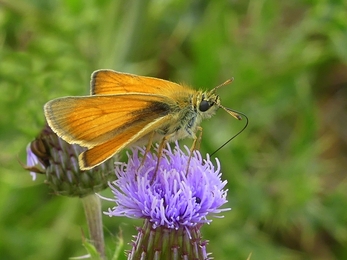It is early May - the birds are singing, the air is heavy with the scent of blossom, and fresh English asparagus is in the shops. Our gardens and flower beds are coming alive with the buzzing of bees and the fluttering of butterfly wings. At this time of year, the butterfly survey season is normally well underway but alas, this year, things are suspended because of the coronavirus outbreak. However – we can still all contribute in a meaningful way to our growing knowledge of these delightful insects!
The monitoring of butterfly populations serves many important purposes. It gives us a window into the effects of environmental change such as the intensification of farming practices, forestry management, urban development and climate warming. Although, over one season, it is hard to tease these effects apart, over the longer timescale patterns and trends begin to emerge. The observations can then help to steer wildlife organisations in the management of reserves, and aid local authorities and farmers in the sympathetic care of our countryside and wildlife.
The annual butterfly surveying activities normally commence during the week starting April 1st, and in line with the Field Guidance notes from the UK Butterfly Monitoring Scheme (UKBMS), continue on a weekly basis until the end of September. The methodology involves walking a standard “sectioned” route, counting the numbers of each species of butterfly seen within a 5-meter cube – ie 2.5 meters each side and 5 meters in front of the recorder. It is important that the recording technique is consistent so that results can be compared across differing time periods. Survey results are sent to the County Butterfly Recorder who populates the appropriate national database.
Leicestershire and Rutland Wildlife Trust co-ordinates many surveys across our two counties including some private landowner sites as well as on Trust reserves such as Charnwood Lodge. On the latter reserve, two standard surveys are carried out by a team of enthusiastic volunteers. One takes in the Colony Reservoir, and a second one covers the somewhat different habitat of Timberwood Hill. Both support important local populations of the Small Heath and the Green Hairstreak butterflies. The lower regions of the Timberwood Hill circuit have colonies of the less common Purple Hairstreak.





